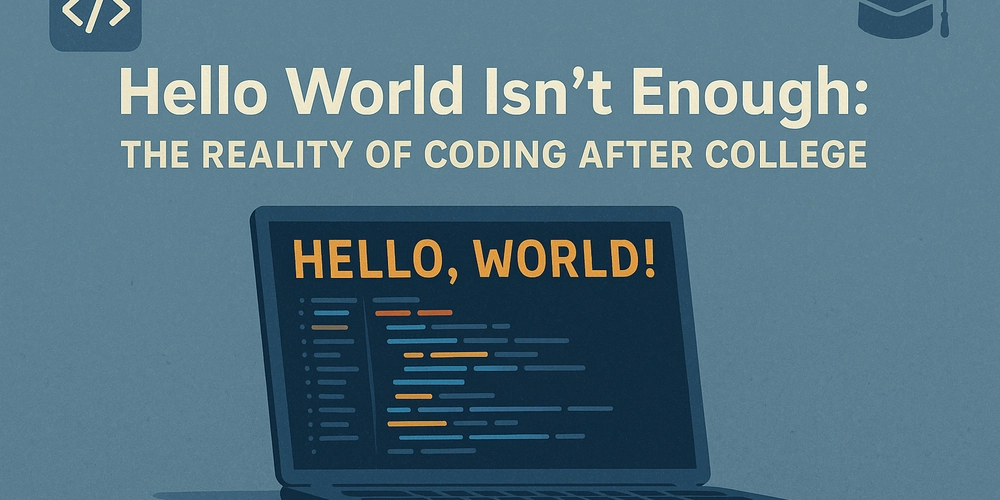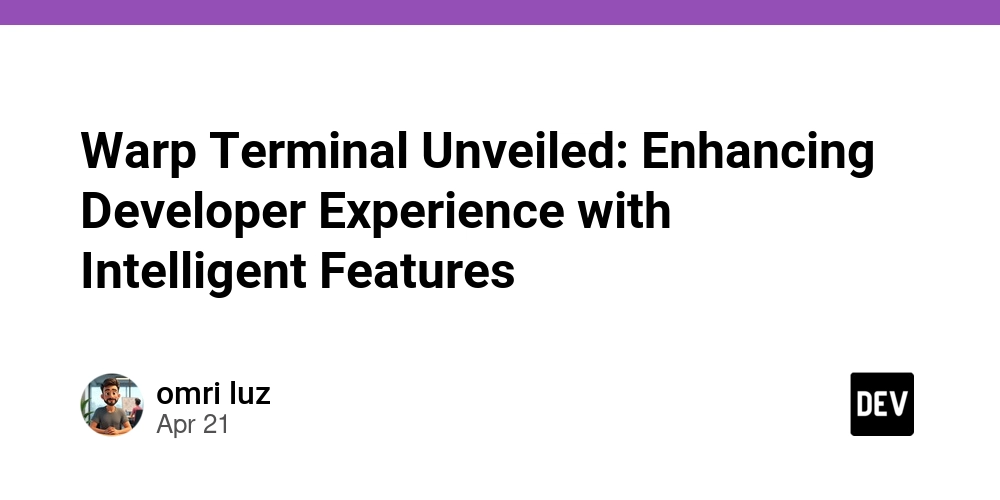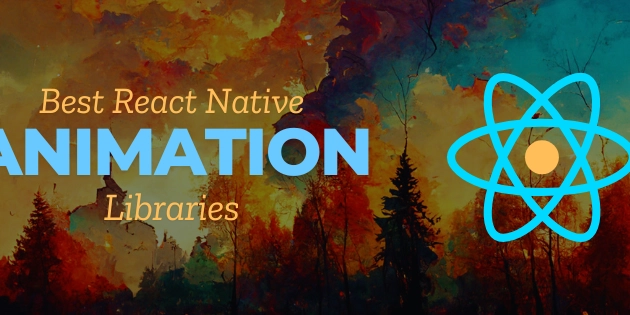Hello World Isn’t Enough: The Reality of Coding After College
What Are Universities Teaching Today? In most Indian universities, the programming curriculum hasn’t evolved much in the past decade. The focus is still on languages like C and C++ for foundational logic, and Java is taught in a very textbook-oriented way, often with outdated versions. Some institutions have started introducing Python, but it’s usually limited to syntax and basic scripting. The syllabus includes subjects like Data Structures, Operating Systems, DBMS, and Computer Networks, but they’re taught with an exam-oriented approach. Real-world technologies like version control, cloud computing, REST APIs, or frameworks like React, Node.js, or Django are almost entirely missing from the curriculum. Are Teachers Updated? Mostly No. A major challenge is that many faculty members were trained years ago and haven’t updated their knowledge with current industry trends. Most of them haven’t worked in real-world development environments and continue teaching from textbooks. As a result, they are unaware of tools and practices used by actual software teams today, like Git, CI/CD pipelines, DevOps, or collaborative platforms like GitHub. Students are rarely exposed to agile development, design patterns, or debugging real codebases. The lack of continuous learning among educators contributes directly to the skill gap that fresh graduates face in the tech industry. Infrastructure Still in the Past University computer labs often run on outdated systems and software. You’ll still find Turbo C++, BlueJ, or even Notepad being used as default environments for writing code. IDEs like VS Code or IntelliJ are rarely encouraged. In many cases, students are not taught how to push their code to GitHub or deploy their projects online. Access to cloud services, servers, or real deployment scenarios is almost nonexistent. Infrastructure that should empower creativity ends up limiting exposure to how development is actually done in the professional world. Marks Matter More Than Skills The current academic system continues to prioritize marks over skills. Students are trained to memorize code and reproduce it in exams rather than solve real-world problems or build working applications. Practical exams often focus on writing algorithms on paper, instead of implementing them in a meaningful project. Viva questions rarely assess problem-solving or development thinking. As a result, many students focus on rote learning just to clear exams — missing out on opportunities to build portfolios, work on real projects, or develop skills that companies actually look for. In addition to practical coding skills, a solid theoretical foundation is crucial for long-term success in programming. Understanding algorithms, data structures, design patterns, and software architecture principles are vital for building efficient, maintainable, and scalable systems. These concepts are often emphasized in college curriculums, but once out in the field, they are frequently overshadowed by the urgency of solving immediate technical problems. However, it’s the theoretical knowledge that empowers developers to make informed decisions, optimize performance, and create solutions that stand the test of time. In the end, coding is not just about writing functional code, but understanding the deeper principles that guide the creation of robust software. Beyond Hello World? In real-life coding, you'll encounter various tools not typically taught in university, including: Version Control: Git and platforms like GitHub, GitLab, or Bitbucket are essential for managing code, collaborating with teams, and tracking changes. Project Management: Tools like Jira, Trello, or Asana help manage tasks, sprints, and project timelines in an agile workflow. Containerization: Docker is widely used for creating, deploying, and managing applications in isolated environments, ensuring consistency across platforms. CI/CD: Jenkins, CircleCI, and Travis CI are tools for automating the testing, building, and deployment of applications. Cloud Platforms: AWS, Azure, and Google Cloud offer scalable infrastructure for deploying and managing applications at scale. IDEs & Editors: Visual Studio Code, IntelliJ IDEA, and PyCharm are commonly used for development, offering features like code completion and debugging tools. Monitoring and Logging: Tools like Prometheus, Grafana, and Splunk help monitor applications and systems, providing insights into performance and errors in production. Testing Frameworks: JUnit, Mocha, Selenium, and Postman are used for automated unit tests, integration tests, and API testing. Security Tools: Tools like OWASP ZAP and Burp Suite help identify vulnerabilities and ensure application security. These tools help streamline development, improve code quality, and ensure scalability, security, and performance in real-world environments. In addition to tools, there are several trends in the tech in

What Are Universities Teaching Today?
In most Indian universities, the programming curriculum hasn’t evolved much in the past decade. The focus is still on languages like C and C++ for foundational logic, and Java is taught in a very textbook-oriented way, often with outdated versions. Some institutions have started introducing Python, but it’s usually limited to syntax and basic scripting. The syllabus includes subjects like Data Structures, Operating Systems, DBMS, and Computer Networks, but they’re taught with an exam-oriented approach. Real-world technologies like version control, cloud computing, REST APIs, or frameworks like React, Node.js, or Django are almost entirely missing from the curriculum.
Are Teachers Updated? Mostly No.
A major challenge is that many faculty members were trained years ago and haven’t updated their knowledge with current industry trends. Most of them haven’t worked in real-world development environments and continue teaching from textbooks. As a result, they are unaware of tools and practices used by actual software teams today, like Git, CI/CD pipelines, DevOps, or collaborative platforms like GitHub. Students are rarely exposed to agile development, design patterns, or debugging real codebases. The lack of continuous learning among educators contributes directly to the skill gap that fresh graduates face in the tech industry.
Infrastructure Still in the Past
University computer labs often run on outdated systems and software. You’ll still find Turbo C++, BlueJ, or even Notepad being used as default environments for writing code. IDEs like VS Code or IntelliJ are rarely encouraged. In many cases, students are not taught how to push their code to GitHub or deploy their projects online. Access to cloud services, servers, or real deployment scenarios is almost nonexistent. Infrastructure that should empower creativity ends up limiting exposure to how development is actually done in the professional world.
Marks Matter More Than Skills
The current academic system continues to prioritize marks over skills. Students are trained to memorize code and reproduce it in exams rather than solve real-world problems or build working applications. Practical exams often focus on writing algorithms on paper, instead of implementing them in a meaningful project. Viva questions rarely assess problem-solving or development thinking. As a result, many students focus on rote learning just to clear exams — missing out on opportunities to build portfolios, work on real projects, or develop skills that companies actually look for.
In addition to practical coding skills, a solid theoretical foundation is crucial for long-term success in programming. Understanding algorithms, data structures, design patterns, and software architecture principles are vital for building efficient, maintainable, and scalable systems. These concepts are often emphasized in college curriculums, but once out in the field, they are frequently overshadowed by the urgency of solving immediate technical problems. However, it’s the theoretical knowledge that empowers developers to make informed decisions, optimize performance, and create solutions that stand the test of time. In the end, coding is not just about writing functional code, but understanding the deeper principles that guide the creation of robust software.
Beyond Hello World?
In real-life coding, you'll encounter various tools not typically taught in university, including:
- Version Control: Git and platforms like GitHub, GitLab, or Bitbucket are essential for managing code, collaborating with teams, and tracking changes.
- Project Management: Tools like Jira, Trello, or Asana help manage tasks, sprints, and project timelines in an agile workflow.
- Containerization: Docker is widely used for creating, deploying, and managing applications in isolated environments, ensuring consistency across platforms.
- CI/CD: Jenkins, CircleCI, and Travis CI are tools for automating the testing, building, and deployment of applications.
- Cloud Platforms: AWS, Azure, and Google Cloud offer scalable infrastructure for deploying and managing applications at scale.
- IDEs & Editors: Visual Studio Code, IntelliJ IDEA, and PyCharm are commonly used for development, offering features like code completion and debugging tools.
- Monitoring and Logging: Tools like Prometheus, Grafana, and Splunk help monitor applications and systems, providing insights into performance and errors in production.
- Testing Frameworks: JUnit, Mocha, Selenium, and Postman are used for automated unit tests, integration tests, and API testing.
- Security Tools: Tools like OWASP ZAP and Burp Suite help identify vulnerabilities and ensure application security.
These tools help streamline development, improve code quality, and ensure scalability, security, and performance in real-world environments.
In addition to tools, there are several trends in the tech industry that are rarely covered in university curricula:
- Cloud Computing: AWS, Google Cloud, and Azure for scalable, cloud-based apps.
- DevOps: Tools like Docker, Jenkins, and Kubernetes for continuous integration and deployment.
- Microservices: Building scalable apps with small, independent services.
- AI/ML: Real-world applications of machine learning with TensorFlow and PyTorch.
- Blockchain: Developing decentralized apps and smart contracts on platforms like Ethereum.
- Edge Computing: Reducing latency by processing data closer to its source.
- Serverless: Using AWS Lambda or Google Functions to build apps without managing servers.
- Quantum Computing: Early-stage tech offering breakthroughs in complex problem-solving.
- AR/VR: Immersive experiences built with Unity and Unreal Engine.
- No-Code/Low-Code: Tools like Bubble and Webflow for rapid app development without coding.
These trends represent the cutting edge of the tech industry, and mastering them can help you stay competitive in the rapidly evolving world of software development.
Conclusion
In conclusion, real-life coding demands a hands-on, practical approach that goes beyond what is taught in university. While concepts like algorithms and data structures are fundamental, modern tools and trends like cloud computing, DevOps, and AI/ML are what shape the future of development. It's important to note that coding isn't something you can master by just watching outdated PowerPoint presentations or learning older versions of languages like Java or Python. The key to becoming a proficient developer is continuous learning, staying updated with the latest trends, and gaining real-world experience through hands-on projects.










































































